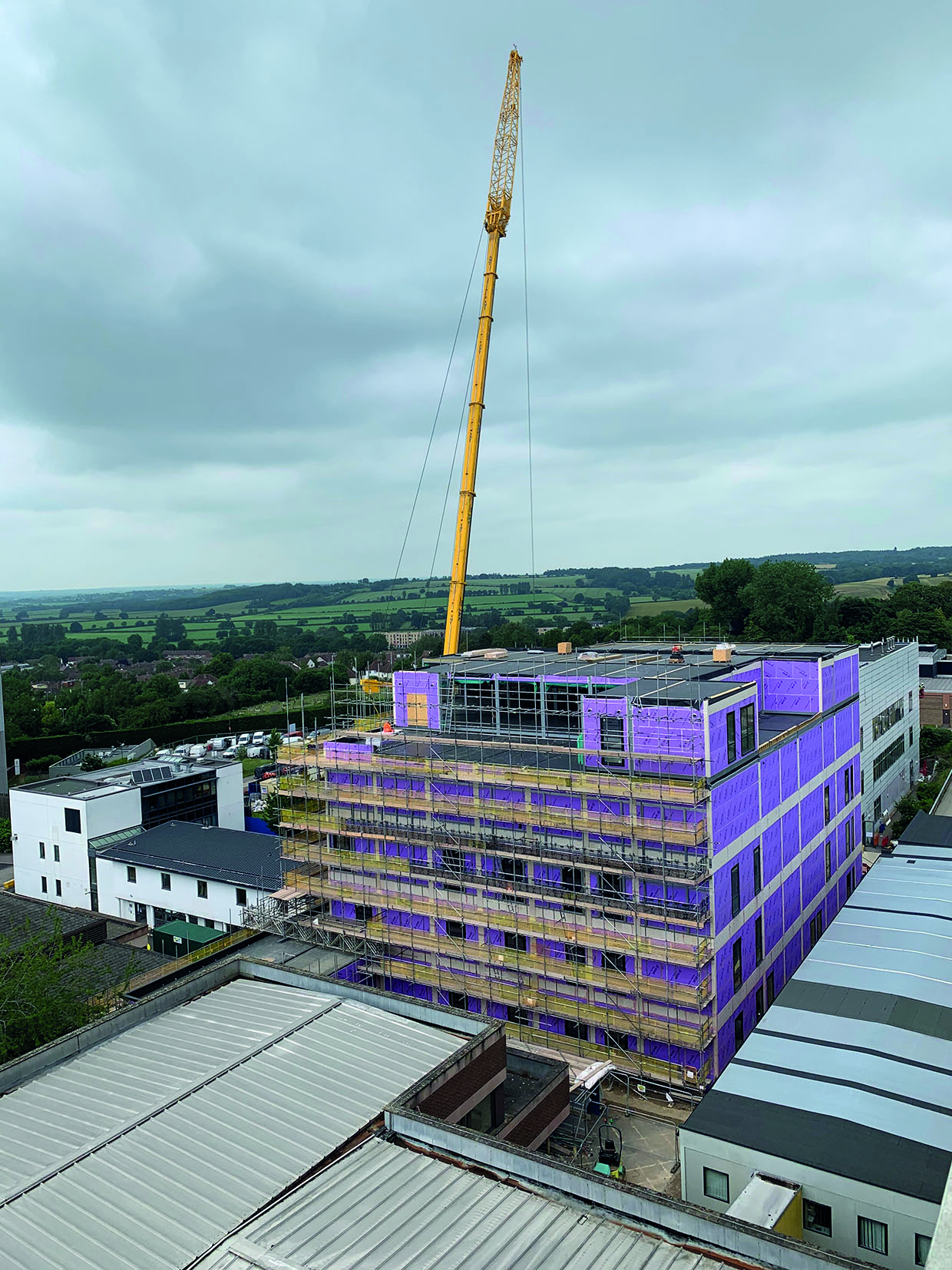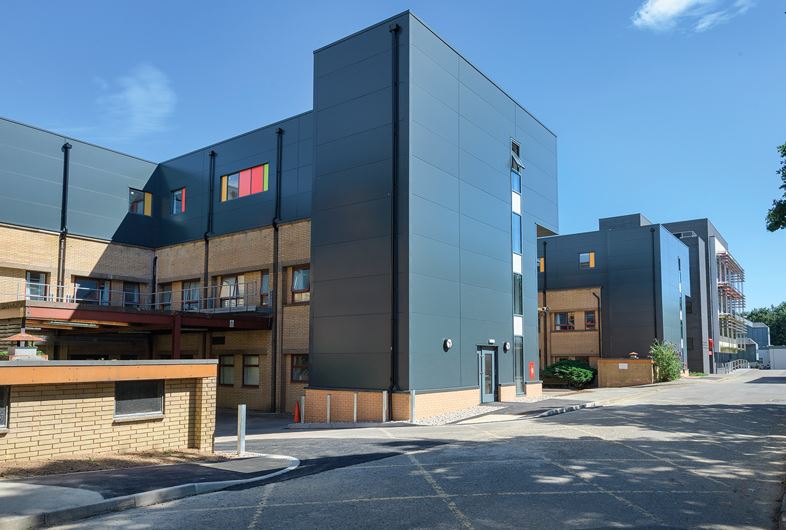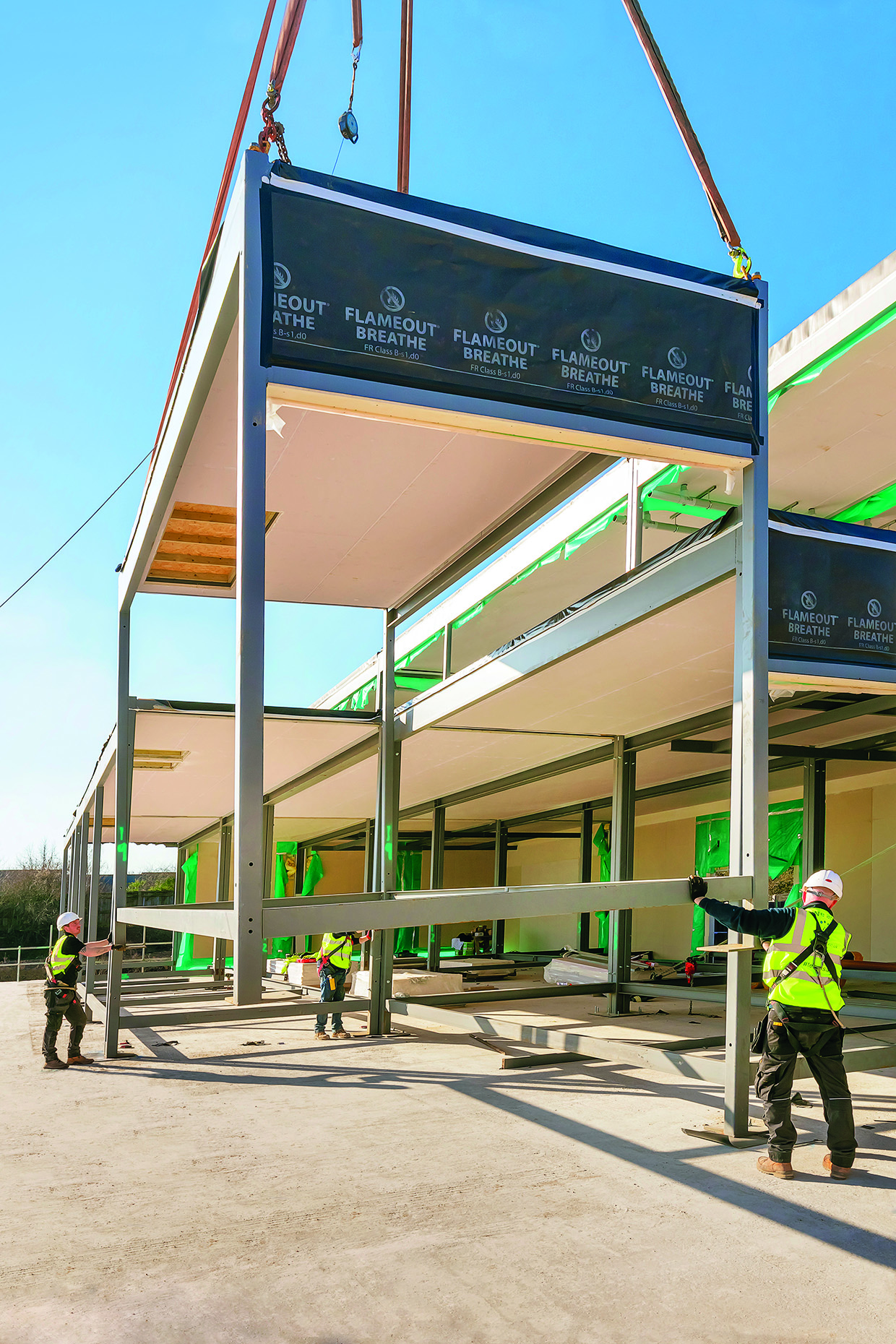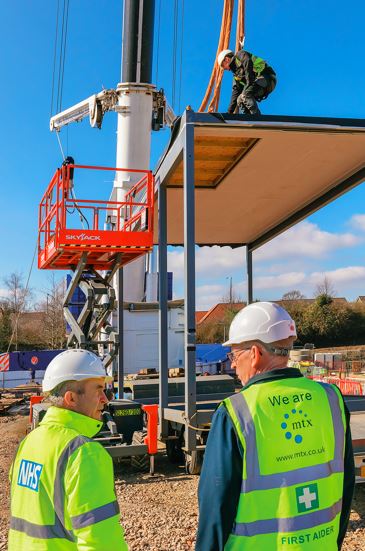
The Government recently renewed its commitment to building 40 new hospitals and is prioritising the use of modern methods of construction (MMC) to deliver these. But, with under seven years to go before the 2030 deadline for completing projects under the New Hospital Plan, (NHP) how realistic is this approach? MMC refers to modular and mobile construction solutions where the design, planning, manufacture, and pre-assembly of elements or components is carried out in a factory environment, prior to installation on site at their intended final location.
A PROVEN APPROACH
The key benefits to this approach are a reduction in the time spent on site, resulting in less noise and disruption, which is critical for working hospital environments; possible cost savings; less waste; and improved health and safety. David Hartley, managing director of MTX Contracts, explains: “There is a general consensus that the plan for 40 new hospitals will also include substantial upgrades and refurbishments to existing NHS estates. “And, while MMC and offsite construction will continue to play a part in new hospital developments on green-field sites, the approach is especially important when creating new facilities within existing hospital sites, where speed of delivery, limited space, and the need to reduce onsite disruption, are vital elements. “MMC delivers healthcare facilities faster, greener, safer, and most cost effectively – and that has been proven time and again. “And the ability to carry out site works at the same time as component parts are being manufactured offsite shortens the build programme. “Delivering facilities more quickly, and to a shorter timescale, means health trusts can get an earlier return on their investment, treat patients more quickly, and reduce waiting lists. It also minimises the disruption of patient pathways, making it easier for staff to continue meeting the needs of patients. “Whether a trust is building a completely-new hospital, or delivering vitally-needed additional facilities, MMC should be at the forefront of everyone’s mind.”
RESTRICTIONS AND LIMITATIONS
Chris Blythe, commercial director at Vanguard Healthcare Solutions, adds: “MMC will add pace to the delivery of the NHP by providing the ability to standardise large areas of clinical space which can be deployed more quickly. “A number of projects will involve significantly upgrading existing hospitals and this is an area where MMC and offsite construction is highly beneficial as it will allow for decant and temporary space to be quickly and efficiently created to keep existing facilities up and running while major refurbishment programmes are ongoing.” But, while offsite construction methods will undoubtedly be favoured for the NHP, there are restrictions and limitations. For example, modular solutions are not suited to big spans like double- or triple-height glass atriums, which are popular in hospital design. So, instead, a hybrid approach is becoming increasingly common. Hartley said: “There is an opportunity to use MMC to deliver the individual facilities that are linked by that atrium or spine, which can not only speed up the build process, but also relieve some of the pressures caused by the recognised shortage of site skills. “It opens up the opportunity for a main contractor to deliver the core and infrastructure elements of a new hospital and employ specialist MMC providers to deliver the various ancillary facilities, fully maximising the speed and cost benefits that MMC can offer.”
CHANGING THE MINDSET
Andy King, group technical director of the Wernick Group, agrees. He told hdm: “Modular buildings are excellent for creating additional wards and general capacity in hospitals quickly and projects up to £20-30m are very buildable. “For example, it is now common to use hybrid solutions, where panelised framing systems can be used for atriums and other double-height core spaces, then multi-storey modular wards and offices can simply be directly linked from those to create even more flexible hospital facilities.” And educating hospital estates managers, architects, and traditional contractors will be crucial to maximising the full potential of MMC moving forward. King explains: “There is a growing understanding of the benefits of MMC, but it depends on the individual organisation. “Trusts and traditional contractors tend to stick with what they know and if they have never used MMC before, they are always nervous to do something new. “It takes a while to get someone to do something for the first time, but, when done effectively, they appreciate that it is all about speed and that’s the number one selling point for offsite construction.” And he advises speaking to MMC specialists at the earliest-possible stage of the design process. “Some trusts have had a bad experience, but usually because the project has been procured through a third party with the upfront design not based on a modular solution,” he said. “Most modular companies are more than capable of being the main contractor on a project, as when they are a sub-contractor there are a lot of additional links in the chain and the client does not always get the solution they are looking for. “You get the best outcome when you engage with the MMC contractor at RIBA stage 1 or 2 and they work alongside your architect or design team from the outset. “Trusts also need a modular champion within the organisation who understands the differences in processes and helps to drive the project through.”

A STARTING POINT
And Blythe warns: “A full defined design process from conceptual design through to facility usage design and full production design is key to overall efficiency and maximises the benefits of MMC. “If the project teams do not have that in their mindset from day one, then the benefits are potentially lost. “Often the project design commences before MMC is considered, which then often involves a redesign process to align to modular and MMC principles. “The earlier a trust engages with the MMC provider, the bigger the benefit and opportunity to fully realise the benefits of MMC and offsite construction.” Standardisation also brings benefits to MMC projects. King advises: “Once you’ve started talking about MMC early in the process, then you can look at what is the best design around standard modules. “Parts of a hospital building lend themselves to standardisation, such as consulting areas and ward wings. “It’s about picking and choosing how to break up a building, then focusing on the use of standard modules and rooms to ensure maximum efficiencies.”
PICKING AND CHOOSING
Blythe adds: “Through standardisation and interchangeability, providers of MMC can deliver multiple building elements at the same time, reducing project build time and maximising the availability of clinical space that meets and exceeds regulatory requirements. “Using a standardised structure means when we build using MMC we have a build footprint which can be replicated very quickly. “If a hospital or trust wanted to add a floor or extend, for example, it’s far easier to do that with a modular solution. “They also have the option to take the modular building apart and move it to another location, maximising how the facility can be utilised and the return on investment – it is a flexible, repeatable, and agile. “Really, it is a ‘big kit of parts’ – the whole MMC modular solution is interchangeable and can be moved and assembled according to the trust’s needs.”
FIRST COME, FIRST SERVED
As a specialist mobile solutions provider, Vanguard has seen increased interest in its solutions as the NHS looks for additional capacity on a more-temporary basis. Blythe said: “Aside from modular, mobile solutions can also have an impact. “Mobile is a cost-effective and rapid option for decant of services. “They are innovative temporary solutions which can help to maintain existing capacity while the NHP gets up and running.” But threatening the delivery of the NHP projects through MMCis capacity. King said: “We have been asked if there is the capacity within MMC to deliver these NHP projects. “There is, but currently it is first come, first served. “If we know we are going to have 10 hospital contracts over the next 10 years, then we will build the capacity. But, if the Government just tenders them one at a time as it does currently, then they are in competition with other sectors. “No one is giving a long-term commitment, so the capacity is going to be what is there on the day. “The Department of Health and Social Care needs a longer-term vision as MMC companies are mindful of investing in additional capacity without a guaranteed pipeline of projects. “Government organisations need to put their money where their mouth is.” King concludes: “MMC is like any game-changing technology; the more people use it, the more it continues to evolve as technology improves and mindsets change to collectively add value and streamline the overall process. “The healthcare sector is at the forefront of the technology revolution and is therefore a natural arena for using MMC and design for manufacture and assembly principles.”


